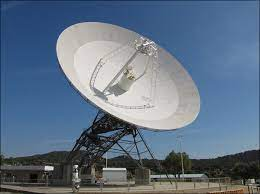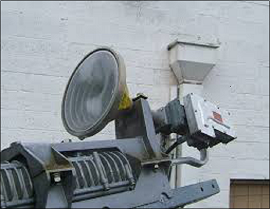What is Antenna and Its Types?
- Get link
- X
- Other Apps
Antenna:
IEEE Std 145-1983 defines the antenna or aerial as a means for radiating or receiving radio waves.
In other words the antenna is the transitional structure between free-space and The guiding device or transmission line may take the form of a coaxial line or a hollow pipe (waveguide).
It is used to transport electromagnetic energy from the transmitting source to the antenna, or from the antenna to the receiver.
Types of Antenna:
1. Wireless Antenna.
2. Aperture Antenna.
3. Microstrip Antenna.
4. Array Antenna.
5. Reflector Antenna.
6. Lens Antenna.
1. Wireless Antenna:
Wire antennas are familiar to the layman because they are seen virtually everywhereon automobiles, buildings, ships, aircraft, spacecraft, and so on. There are various shapes of wire antennas such as a straight wire (dipole), loop, and helix.

Dipole Antenna - Wireless Antenna
Antennas of this type are very useful for aircraft and spacecraft applications, because they can be very conveniently flush-mounted on the skin of the aircraft or spacecraft. In addition, they can be covered with a dielectric material to protect them from hazardous conditions of the environment.
These antennas consist of a metallic patch on a grounded substrate. The metallic patch can take many different configurations.The microstrip antennas are low-profile, comformable to planar and nonplanar surfaces, simple and inexpensive to fabricate using modern printed-circuit technology.
These antennas can be mounted on the surface of high-performance aircraft, spacecraft, satellites, missiles, cars, and even handheld mobile telephones.
4. Array Antenna
Array Antennas Many applications require radiation characteristics that may not be achievable by a single element. It may, however, be possible that an aggregate of radiating elements in an electrical and geometrical arrangement (an array) will result in the desired radiation characteristics.
5. Reflector Antenna
A very common antenna form for such an application is a parabolic reflector.
Antennas of this type have been built with diameters as large as 305 m. Such large dimensions are needed to achieve the high gain required to transmit or receive signals after millions of miles of travel. Another form of a reflector, although not as common as the parabolic, is the corner reflector.
6. Lens Antenna
Lens Antennas Lenses are primarily used to collimate incident divergent energy to prevent it from spreading in undesired directions. By properly shaping the geometrical configuration and choosing the appropriate material of the lenses, they can transform various forms of divergent energy into plane waves. They can be used in most of the same applications as are the parabolic reflectors, especially at higher frequencies. Their dimensions and weight become exceedingly large at lower frequencies.
- Get link
- X
- Other Apps











Comments
Post a Comment
Welcome